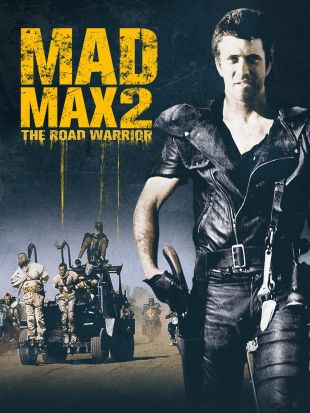George Miller, the original Aussie Renaissance man, has divided his life between two great passions: medicine and cinema. Consequently, his most enduring big-screen works as a writer/director/producer -- arguably, the Mad Max series and Lorenzo's Oil -- combine these interests in subtle and not-so-subtle (but consistently electrifying) ways.
Born in 1945 in a suburb of Brisbane, Queensland, Northeastern Australia, Miller was christened George Miliotis by his Greek immigrant parents, but he anglicized his surname as a young man. He grew up in the nearby bucolic town of Chinchilla, Queensland, and developed an enduring infatuation with cinema from an early age, but medicine (and more specifically, the physiology of the human body) entranced him with competing force. He and his twin brother, John, thus enrolled jointly at the New South Wales Medical School in the late '60s, and George interned at St. Vincent's Hospital in Sydney upon graduation.
During this period (1971), John and George decided to jointly produce and direct a one-minute short. Entered in a local competition, the effort won first prize, which just happened to be free enrollment in a summer film school workshop in the southern metropolis of Melbourne. During his education there, Miller met Byron Kennedy, who in time became his most significant partner and collaborator. Miller cut back to part-time work as a physician, and in off-hours he and Kennedy began to prolifically script and direct experimental shorts; in addition, Miller wrote a number of feature-length screenplays.
The infamous Miller/Kennedy short-subject film Violence in the Cinema, Part 1 and Miller's first major theatrical release, the international blockbuster Mad Max (1979), are thematically linked, and both find their inspiration in the injuries that Miller witnessed at St. Vincent's (stationed as an intern in the hospital's casualty ward). Per its title, Violence juxtaposes a satirically tinged, nauseating series of violent images back to back. The parallels between the hospital work and Mad Max are perhaps less obvious, but the hyper-graphic picture caused a sensation around the world.
Mad Max, of course, broke the floodgates of Australian cinema; it also made a superstar of Mel Gibson. Miller and Kennedy formed the eponymous Miller-Kennedy production company to launch the film, and its triumph yielded a sequel, The Road Warrior (1981). In 1982, Miller helmed the "Nightmare at 20,000 Feet" episode of Twilight Zone: The Movie, with John Lithgow as Valentine, a poor fellow who witnesses an imp pounding on the wing of his airplane in mid-flight. Even the many critics who savaged the film regarded this segment as compelling.
That same year, however, tragedy reigned in Miller's life. One day in July 1983, Kennedy was piloting an airplane and crashed the vehicle in mid-flight. At first, Miller anticipated the end of Mad Max, without the presence of his longtime partner and friend, but he ultimately listened to his instincts and forged ahead at Kennedy-Miller, with the third installment of the Gibson series, Mad Max Beyond Thunderdome (co-starring rock diva Tina Turner), and two ten-hour television miniseries. Meanwhile, he continued to shepherd local Aussie product into the international marketplace, including John Duigan's gentle coming-of-agers The Year My Voice Broke (1987) and Flirting (1990), and Phillip Noyce's heart-pounder Dead Calm (1989).
In 1986, Miller helmed the horror comedyThe Witches of Eastwick, adapted from a 1984 John Updike novel and starring Jack Nicholson as a sexually voracious Satan, seduced by three witches (Susan Sarandon, Michelle Pfeiffer, and Cher) in a small New England town. The effects-heavy picture became a box-office sensation thanks to the fine lead performances and Miller's craftsmanship, but it was purportedly a miserable experience for Miller, who felt consistently at odds with the material. He fared substantially better -- and produced his most personal work to date -- with the 1992 feature Lorenzo's Oil, a subject inspired directly by Miller's early hospital work. Based on real-life events, the picture stars Eastwick mainstay Susan Sarandon and Nick Nolte as Italian parents who fight to save the life of their son from a rare disorder, adrenoleukodystrophy. Miller's use of horror stylistics (low angles, harsh lighting) to evoke the terror at the heart of the couple's lives impressed critics and audiences.
In the ensuing years, Miller continued to develop and produce new projects at Kennedy-Miller. He found his broadest international success by producing and scripting Babe (1995) -- a cute fantasy about a talking pig -- and by producing, scripting, and directing its 1998 sequel, Babe: Pig in the City. In 2006, Miller returned to form with Happy Feet, a live-action feature about a talking penguin, graced with the vocal talents of Robin Williams, Hugh Jackman, Nicole Kidman, and others. In addition to being a runaway hit, it won that year's Academy Award for Best Animated Feature.
In addition to his work on features, Miller is also responsible for helming the acclaimed 1996 documentary 40,000 Years of Dreaming: A Century of Australian Cinema, financed by The British Film Institute.
Miller returned to his first franchise in 2015, directing, writing and producing Mad Max: Fury Road. Starring Tom Hardy as the titular Max and featuring Charlize Theron with a shaved head, the film opened to rave reviews and was the second-most nominated film at the Oscars that year, including Miller's first nomination for directing.



